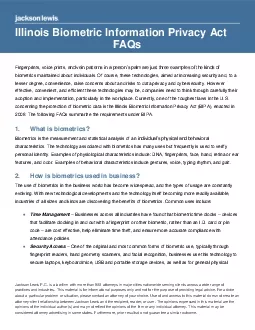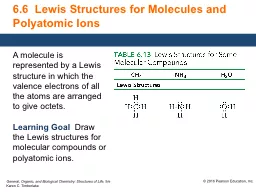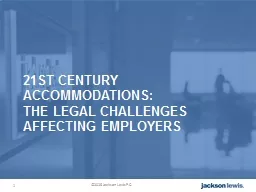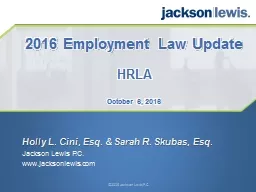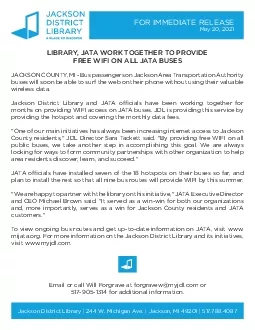PDF-Jackson Lewis PC
Author : gelbero | Published Date : 2021-08-21
is a law firm with more than 900 attorneys in major cities nationwide serving clients across a wide range of practices and industries This material is for informational
Presentation Embed Code
Download Presentation
Download Presentation The PPT/PDF document "Jackson Lewis PC" is the property of its rightful owner. Permission is granted to download and print the materials on this website for personal, non-commercial use only, and to display it on your personal computer provided you do not modify the materials and that you retain all copyright notices contained in the materials. By downloading content from our website, you accept the terms of this agreement.
Jackson Lewis PC: Transcript
Download Rules Of Document
"Jackson Lewis PC"The content belongs to its owner. You may download and print it for personal use, without modification, and keep all copyright notices. By downloading, you agree to these terms.
Related Documents

